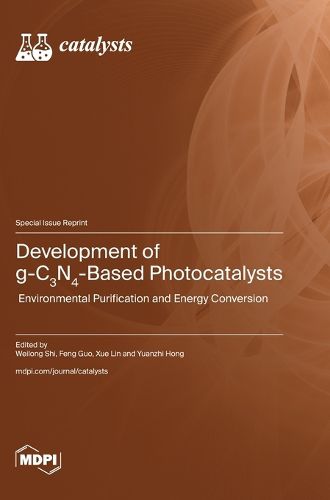Readings Newsletter
Become a Readings Member to make your shopping experience even easier.
Sign in or sign up for free!
You’re not far away from qualifying for FREE standard shipping within Australia
You’ve qualified for FREE standard shipping within Australia
The cart is loading…






This title is printed to order. This book may have been self-published. If so, we cannot guarantee the quality of the content. In the main most books will have gone through the editing process however some may not. We therefore suggest that you be aware of this before ordering this book. If in doubt check either the author or publisher’s details as we are unable to accept any returns unless they are faulty. Please contact us if you have any questions.
Energy crises and environmental pollution are two serious problems facing the development of human society. Photocatalysis is a promising environmentally friendly technology to address the above issues due to its low energy input and carbon footprint. In particular, graphitic carbon nitride, a typical organic-nonmetallic semiconductor photocatalyst, has become a research hotspot due to its unique properties; g-C3N4 is innoxious, inexpensive, easy to synthesize, has an appropriate energy band gap (2.7 eV), and demonstrates outstanding thermal stability and chemical stability. Nevertheless, some inherent scientific factors, such as its small surface area, low utilization of visible light, and fast recombination of electrons and holes, limit its applications in the field of photocatalysis. Among key modification methods, the construction of a heterojunction/homojunction between graphitic carbon nitride and other semiconductor photocatalysts with interleaved energy band positions is an effective approach to improve photocatalytic activity, attributed to the accelerated photon-generated carrier transfer rate. In particular, such S-scheme structures can simultaneously accelerate photon-generated carrier transfer rates and yield higher redox potentials. Therefore, there is an urgent need to design a neoteric g-C3N4-based photocatalytic system that can further promote the development of photocatalysis.
$9.00 standard shipping within Australia
FREE standard shipping within Australia for orders over $100.00
Express & International shipping calculated at checkout
This title is printed to order. This book may have been self-published. If so, we cannot guarantee the quality of the content. In the main most books will have gone through the editing process however some may not. We therefore suggest that you be aware of this before ordering this book. If in doubt check either the author or publisher’s details as we are unable to accept any returns unless they are faulty. Please contact us if you have any questions.
Energy crises and environmental pollution are two serious problems facing the development of human society. Photocatalysis is a promising environmentally friendly technology to address the above issues due to its low energy input and carbon footprint. In particular, graphitic carbon nitride, a typical organic-nonmetallic semiconductor photocatalyst, has become a research hotspot due to its unique properties; g-C3N4 is innoxious, inexpensive, easy to synthesize, has an appropriate energy band gap (2.7 eV), and demonstrates outstanding thermal stability and chemical stability. Nevertheless, some inherent scientific factors, such as its small surface area, low utilization of visible light, and fast recombination of electrons and holes, limit its applications in the field of photocatalysis. Among key modification methods, the construction of a heterojunction/homojunction between graphitic carbon nitride and other semiconductor photocatalysts with interleaved energy band positions is an effective approach to improve photocatalytic activity, attributed to the accelerated photon-generated carrier transfer rate. In particular, such S-scheme structures can simultaneously accelerate photon-generated carrier transfer rates and yield higher redox potentials. Therefore, there is an urgent need to design a neoteric g-C3N4-based photocatalytic system that can further promote the development of photocatalysis.